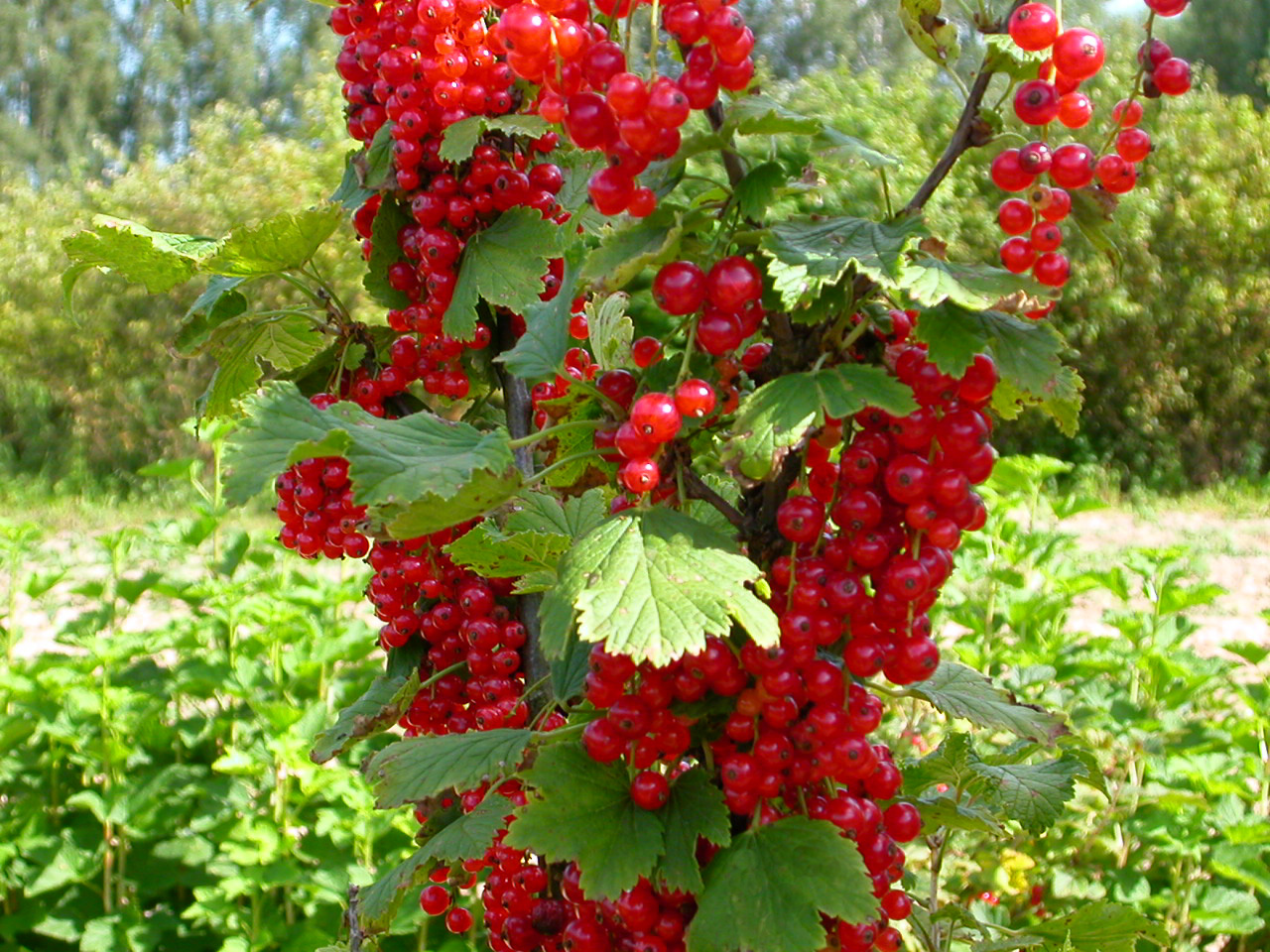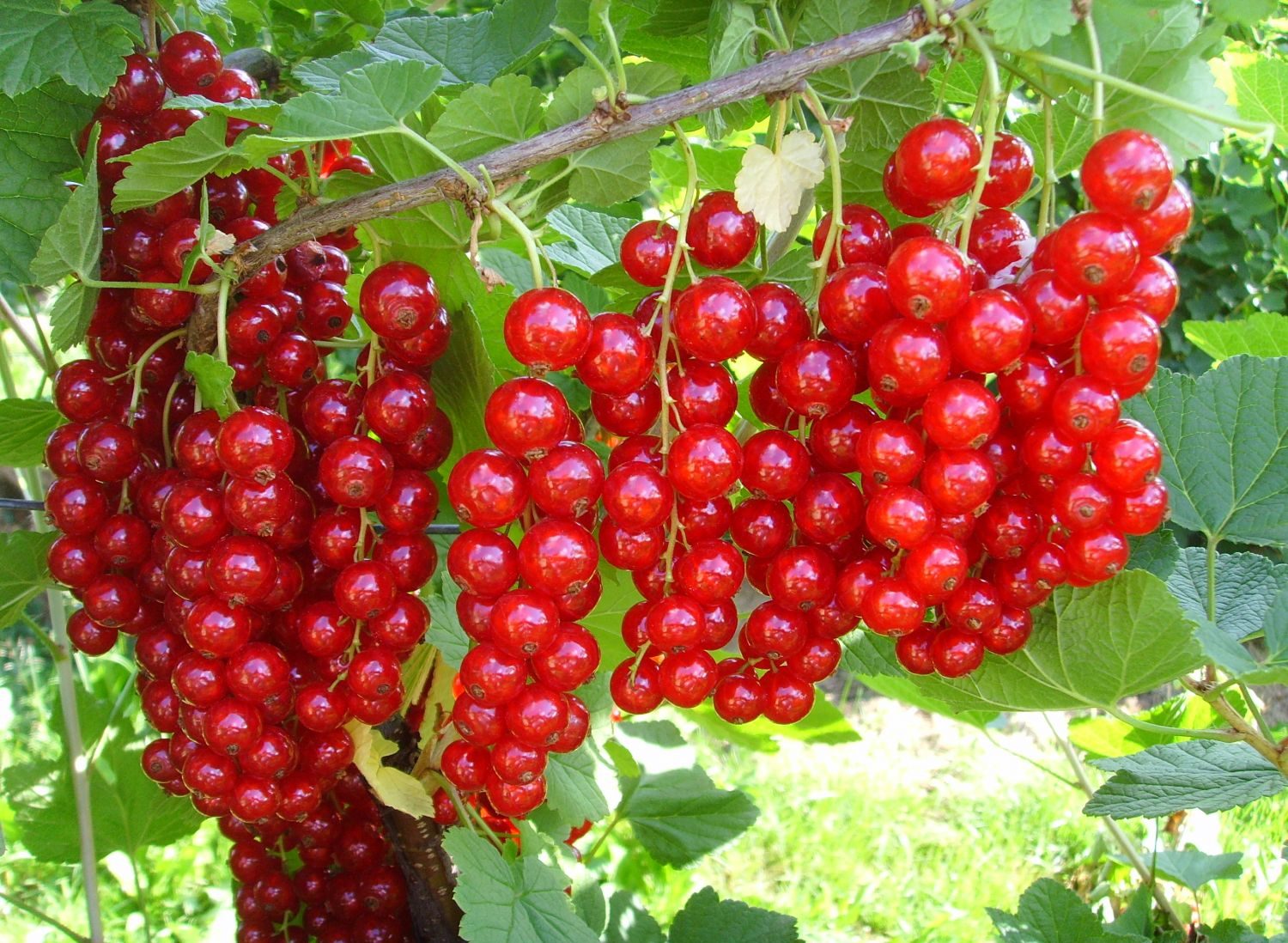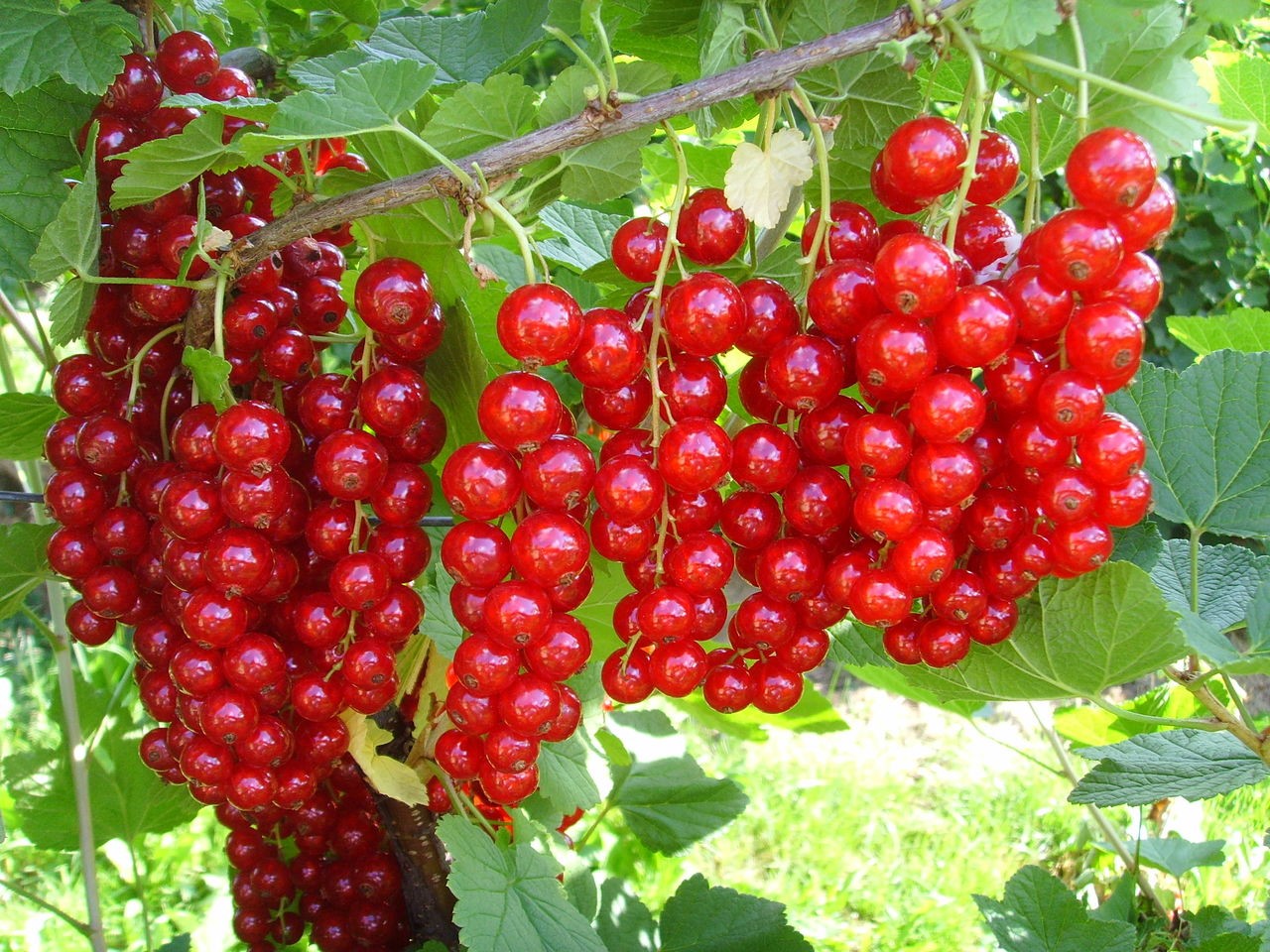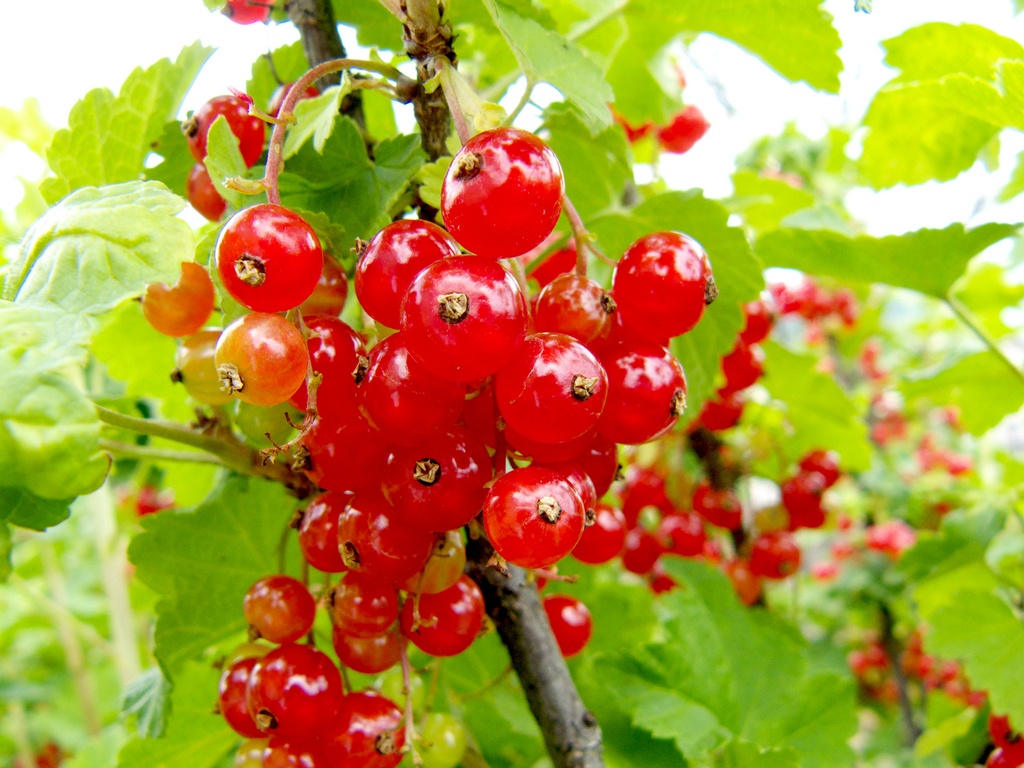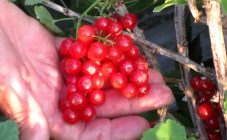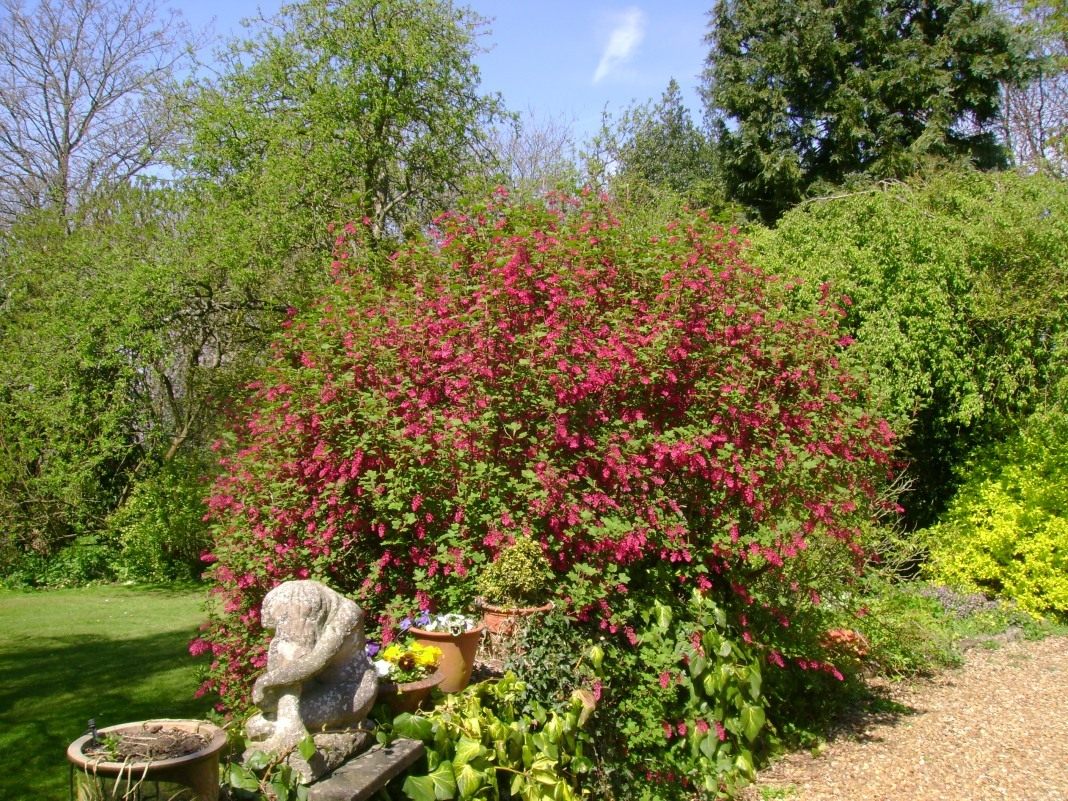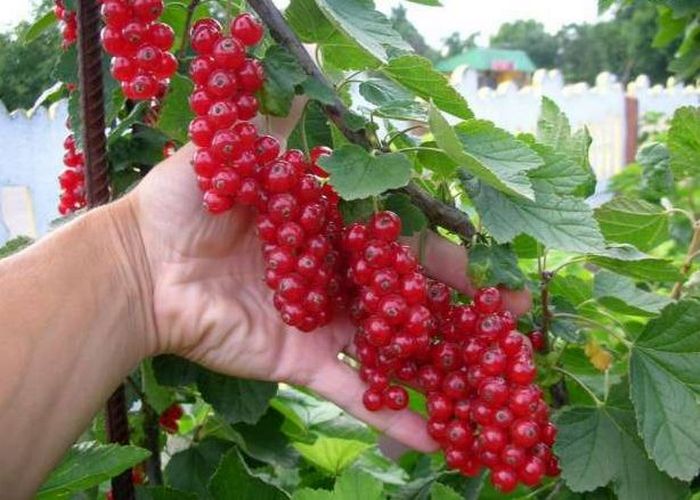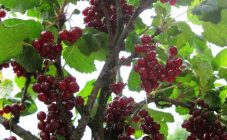Content:
The beloved was bred relatively recently. She attracted gardeners with almost complete lack of hassle in growing and a rich harvest of sweet berries.
The species was bred by breeders of Belarus. The author is the breeder A. G. Voluznev. Such currants are famous for their resistance to frost and a large harvest, which can reach 8 kg from one bush. In Russia, the berry was officially cultivated only in 2006, although it was included in the State Register of Species of Belarus back in 1991.
Currant Beloved: description of the variety and characteristics
Outwardly, currant looks like a low-growing bush with branched branches, which are densely hung with red glossy berries.
The thick and straight shoots have oblong buds. Younger branches are purple-red, while older ones are gray.
The leaves are similar in shape to maple leaves, along the edge there are blunt teeth. The flowers are small and very delicate. They appear in early May and remain until the middle of the month. They resemble yellow-green blue saucers.
The reddish color of the berries is diluted with dark stripes. The currants are soft and juicy, all the same size, as if the berries were specially selected. Despite the sweetness, sourness is present in them, but it does not spoil the taste, but only improves it.
The weight of an average berry ranges from 0.6 to 0.8 grams. There are a small amount of seeds under the skin. The bunches in which the fruits are collected hang for a long time on the branches, the berries almost do not fall off even during transportation.
Currants can be eaten fresh. In addition, it makes a very tasty jam, to which apples are often added.
This type of currant is distinguished by its yield. In the first year, the plant can bear up to 3 kg of fruit. If a mature plant is fertilized well, the yield can rise to 12 kg. In good weather, ripening occurs at the end of June. If the spring is protracted, the dates may move to early July.
The shrubs of the plant tolerate frost well. It is not necessary to cover them for the winter.
Features of care and landing
- Soil and illumination. The currant bush grows well on non-acidic and loamy soil. The soil must be loose and drainable. Nutritional components must be supplied. Without organic matter and minerals, the plant will not fully bear fruit. In addition, fungal diseases can halve the yield.
You cannot plant the species near black currants, since the bushes nearby will not get along. No other plant will have an effect on the currant. The planting site should not be in the shade, currants prefer sunlight.
- Landing time. It is recommended to plant bushes of red berries in early autumn. Before planting (1-2 hours) the plant must be immersed in water saturated with Kornevin. In this case, the currants very quickly form new roots. If you see broken roots, they should be removed immediately.
The red currant bush grows for at least 20-25 years.She is a long-liver, so the hole must be at least 60 cm deep.The distance between the holes is at least 2 m.
Mineral and organic fertilizers are poured at the bottom of the pit: branches and chips, chalk (0.5 kg) or dolomite. Chalk can be replaced with ash from the oven (1 liter is sufficient). It is necessary to pour compost on top, and then fill the pit with water. Thanks to the liquid, the fertilizer layers will be compacted.
- Landing. In the hole prepared for the currants, you need to pour a little earth, place a seedling on it and spread the roots. The plant is planted, slightly tilting, three buds above the stem must be covered with earth. Dense soil is diluted with sand. The remaining buds are located above the ground. So that the roots are well settled in the ground, it is watered with water. The land around the planted plant is not compacted;
- Pruning. Before planting, the stems are cut fairly short. Several strong buds are left above the ground, from which new shoots will develop by spring. After pruning, a pile of earth is raked up around the plant, about 12 cm high.In the spring, the earth is harvested, the currants are no longer touched. A year later, in the fall, the branches are shortened by a quarter. The next pruning is done in the spring. A few strong shoots are left, and the weak are cut as close to the ground as possible. There is no need to leave stumps when pruning.
- Watering. Currants do not need mandatory watering. Moisture extracted from the ground is enough for the bushes. Mandatory watering is necessary while pouring berries, if there is a strong heat outside. You should not spare water, you need at least 4-5 buckets. First, a small hole is dug around the bush, 1 bucket is poured into it, and after absorbing moisture, the rest. The procedure is performed in the evening, so that the roots in the hot earth do not get steamed and rot.
- Top dressing. The type of currant does not require mandatory feeding, but will be happy with it. Over time, nutrients are used up, so they need to be replenished. It is enough to do this once every 3-4 years. After this time, urea is used as top dressing (25 grams per 1 bush).
At the beginning of flowering, the plant must be fertilized with a mullein (100 grams per 1 liter). To increase the yield, currants should be sprayed with a solution of boric acid (2 grams of dry powder) and water (10 liters). Spraying is carried out in the evening, in dry weather. It makes no sense to do this during or after rain.
A mulching layer is useful for plants, the thickness of which should be at least 10 cm. Humus or peat is scattered on the surface of the earth.
Advantages and disadvantages
Among the advantages of Beloved, it is worth highlighting the following:
- Winter hardiness. This type of plant will not disappear in extremely cold winters. It is not required to cover it during this period;
- Excellent self-fertility and no need for cross-pollination;
- Resistant to numerous diseases and insects. The plant is not afraid of kidney mites, powdery mildew, anthracnose;
- Excellent yield. The bush can produce 11-12 kg of berries per season;
- The fruits are rich in mineral salts and organic acids, tannins and pectin substances and vitamins: carotene, vitamin C;
- Fresh berries are a delicious dessert. Currant juice is good for your health: it helps with colds and improves bowel function.
Despite its long track record, it also has some disadvantages:
- Leaves susceptibility to mottling.This does not affect the harvest in any way, but it carries an aesthetic component. So that the leaves do not crumble, it is necessary to spray the plant with Bordeaux mixture before flowering and after picking berries;
- Another fungal disease that can cause the loss of half of the crop is goblet rust. The Bordeaux mixture also saves from it, but it is necessary to spray it 3 times: during the blooming of the foliage, during the period when the buds appear and after the flowering has ended.
The type of currant called Nenaglyadnaya compares favorably with other varieties. He is not afraid of frost, resistant to most diseases and pests. In addition, Beloved pleases with a large harvest and excellent taste. It makes a healthy jam that helps against colds.

